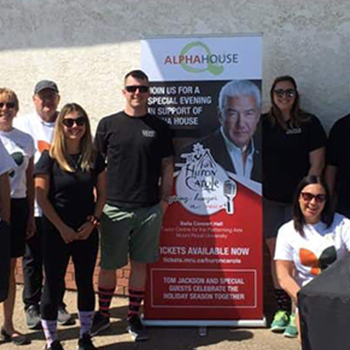International Overdose Awareness Day
September 1, 2023 | Uncategorized

The Calgary Tower lit up in honour of International Overdose Awareness Day
Time to Remember. Time to Act.
International Overdose Awareness Day is the world’s largest annual campaign to end overdose, remember without stigma those who have died and acknowledge the grief of the family and friends left behind.
The campaign raises awareness of overdose, which is one of the world’s worst public health crises, and stimulates action and discussion about evidence-based overdose prevention and drug policy.
The campaign also acknowledges the profound grief felt by families and friends whose loved ones have died or suffered permanent injury from a drug overdose.
International Overdose Awareness Day spreads the message about the tragedy of drug overdose death and that drug overdose is preventable.
The goals of International Overdose Awareness Day are:
- To provide an opportunity for people to publicly mourn loved ones in a safe environment, some for the first time without feeling guilt or shame.
- To include the greatest number of people in International Overdose Awareness Day events, and encourage non-denominational involvement.
- To provide information about the issue of fatal and non-fatal overdose.
- To send a strong message to current and former people who use drugs that they are valued.
- To stimulate discussion about overdose prevention and drug policy.
- To provide basic information on the range of support services that are available.
- To prevent and reduce drug-related harm by supporting evidence-based policy and practice.
- To inform people around the world about the risk of overdose.
Sources:
Penington Institute (2023). About the Campaign.
Worldwide
- There is an international crisis of drug overdose. Over the last twenty years drug overdose deaths have increased significantly in many parts of the world. Each year a record number of deaths are reported, predominantly driven by the misuse of opioids, often in combination with other drugs including benzodiazepines, stimulants and alcohol.
- In 2020, an estimated 284 million people – one in every 18 people aged 15-64 – had used a drug in the past 12 months, a 26 per cent increase from 2010.
- Opioids account for two-thirds (69 per cent) of drug overdose deaths. The estimated number of people using opioids globally has doubled from 26-36 million people in 2010 to 61.3 million in 2020. There are currently multiple ongoing opioid overdose epidemics in the world; one is driven by the increased presence of the synthetic opioid fentanyl in the United States and Canada, while another in North Africa, West Africa, the Near and Middle East and South-West Asia is due to the non-medical use of the synthetic opioid tramadol.
- Some of the new drugs available today – most notably synthetic opioids and amphetamine-type stimulants – are more dangerous than their counterparts were 20 or even 10 years ago. There were 1,127 new psychoactive substances reported in 134 countries and territories between 2009 and 2021. Opioids are the fastest-growing and most harmful group of new psychoactive substances – there were 87 different types recorded globally in 2020, an increase from just one in 2009.
Sources:
Penington Institute (2022). Global Overdose Snapshot.
UNODC (2022). World Drug Report 2022.
Canada
- There was a total of 32,632 apparent opioid toxicity deaths between January 2016 and June 2022.
- A majority of deaths occurred in British Columbia, Alberta, and Ontario; high rates were also observed within other regions.
- In 2021, fentanyl was responsible for 87 per cent of opioid-overdose deaths in Canada. Of the accidental stimulant toxicity deaths during the year, 62 percent involved cocaine, while 55 percent involved methamphetamines.
Source:
Government of Canada (2022). Health Infobase.
Recognizing Those Who Go Unseen.
As an agency committed to providing safe and caring environments for those whose lives have been affected by alcohol and other substance addictions, Alpha House acknowledges both the importance of IOAD and this year’s theme, “Recognizing Those People Who Go Unseen”.
Overdose alters the lives of those who experience it, as well as those around them. This includes the family and friends who grieve the loss of their loved ones, workers in support services and healthcare who tirelessly commit themselves to providing safety and stability to those around them, and first responders who provide emergency, life saving care under traumatic circumstances.
This is a crisis that we are all in together, and on this day, we amplify the voices of those individuals in our communities who often go unrecognized. We acknowledge their strength, compassion, and care as an example to us all.
Today, we say to them: “We see you.”
